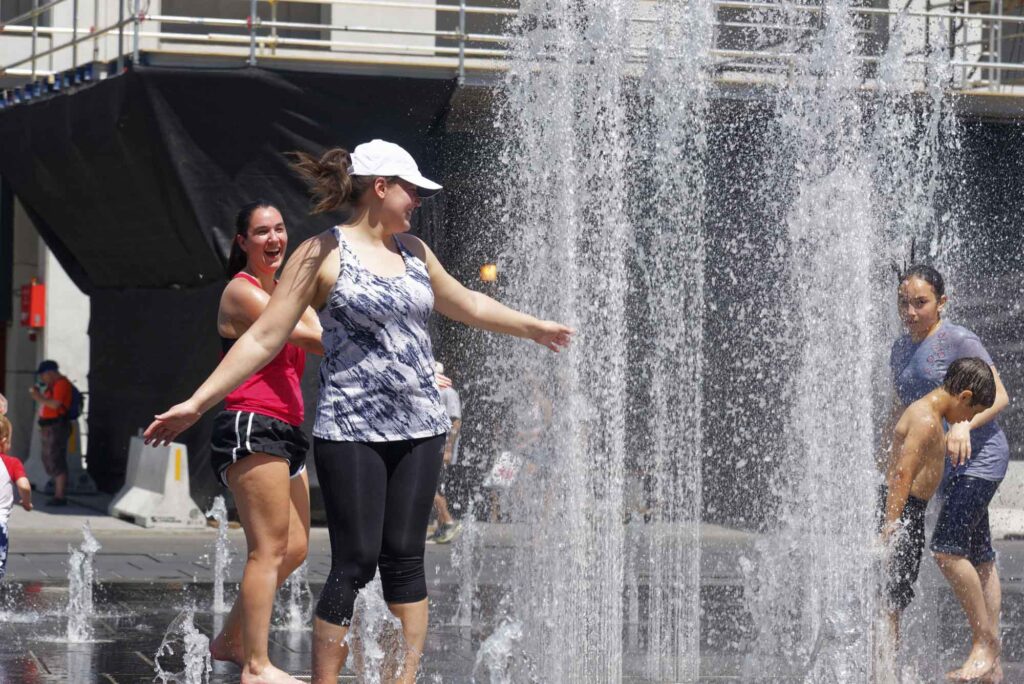Taking Action
Extreme heat is likely to become more of a problem in urban areas, particularly in southeastern Canada where humidity levels also tend to be high in summer. Many urban areas already experience the urban heat island (UHI) effect, which keeps cities warmer than the surrounding countryside due to the building fabric (concrete, stone, asphalt etc.) absorbing and retaining heat. The UHI effect prevents cities from cooling down at night and thus exacerbates heat waves. There are measures which can be taken to reduce the impact of hot weather in cities, which some communities are already implementing. For example, the Montreal borough of Rosemont – La Petite Patrie revised its zoning bylaws in 2011 to combat the UHI effect, which is projected to worsen in the future.13,14 These bylaw revisions include:
- The installation of green, or highly reflective, roofs on new buildings or for roof replacements;
- The introduction of at least 15% vegetated area landscaped with plants, bushes and trees for all new parking lots of 10 or more spaces;
- A minimum specified surface reflectivity rating for new paving materials;
- The requirement for at least 20% of a new building site to remain open ground and be landscaped with plants, bushes and trees.





